Sambar, a beloved South Indian dish, is not just a recipe – it’s a cultural icon. Rich in flavor and history, this hearty stew combines the goodness of lentils, vegetables, and aromatic spices, cooked in a tangy tamarind-based broth. Whether you're a seasoned cook or a beginner, learning how to make authentic sambar recipe will bring the taste of South India to your kitchen. Let’s dive into this easy-to-follow sambar recipe that’s sure to satisfy your cravings and impress your guests.
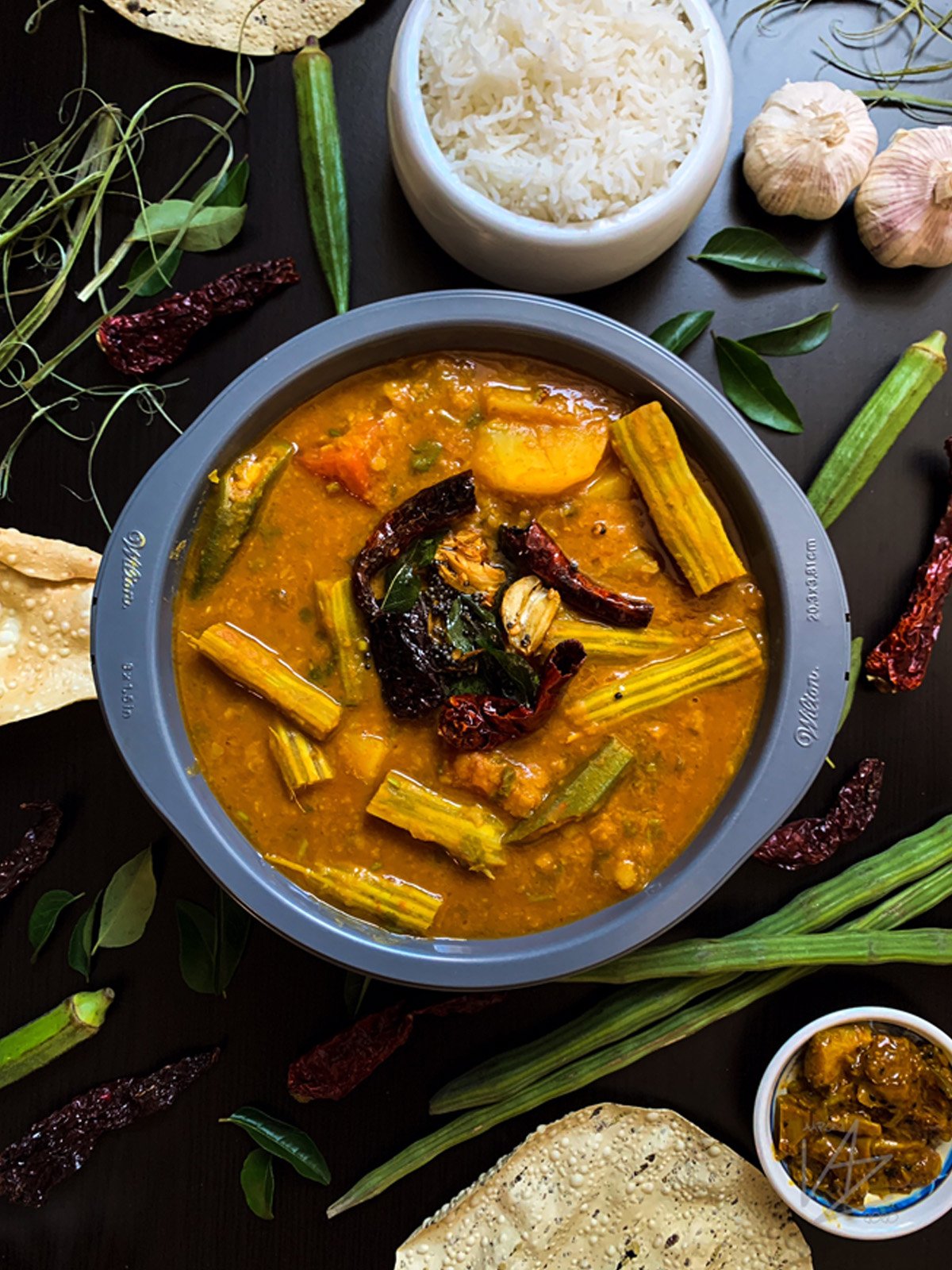
Jump to:
What is Sambar?
The sambar recipe is a traditional South Indian stew that combines toor dal (pigeon peas), mixed vegetables, and tamarind. People typically serve this dish with idli, dosa, or rice, and it features a tangy, spicy flavor profile.
Each region in South India adds its own twist to the sambar recipe, varying the vegetables and spices. Rich in protein, fiber, and essential vitamins, sambar makes a nutritious, wholesome meal that people love worldwide.
Essential Ingredients for Sambar Recipe
To create the perfect sambar, you’ll need these key ingredients:
- Toor Dal (Pigeon Peas): The foundation of sambar, providing a creamy texture and rich flavor.
- Tamarind: Adds the signature tanginess that makes sambar so unique.
- Sambar Powder: A special blend of spices that defines the dish. You can either use store-bought powder or make your own for an extra burst of flavor.
- Curry Leaves: Essential for that authentic South Indian aroma and taste.
- Mixed Vegetables: Common additions include carrots, potatoes, tomatoes, and drumsticks (moringa), but you can also add eggplant, pumpkin, or beans.
Craving more tasty dishes? Check out these mouthwatering recipes:
Sambar Rice - A comforting, flavorful bowl of joy!
Oats Idli - Light, fluffy, and oh-so-healthy!
Puliodharai - Tangy tamarind rice that'll tickle your taste buds!
Dal Fry - Spicy, savory, and absolutely satisfying!
Moong Dal - Light, wholesome, and packed with goodness!
What you Need to Make This Vegetable Sambar Recipe
Recipe Ingredients
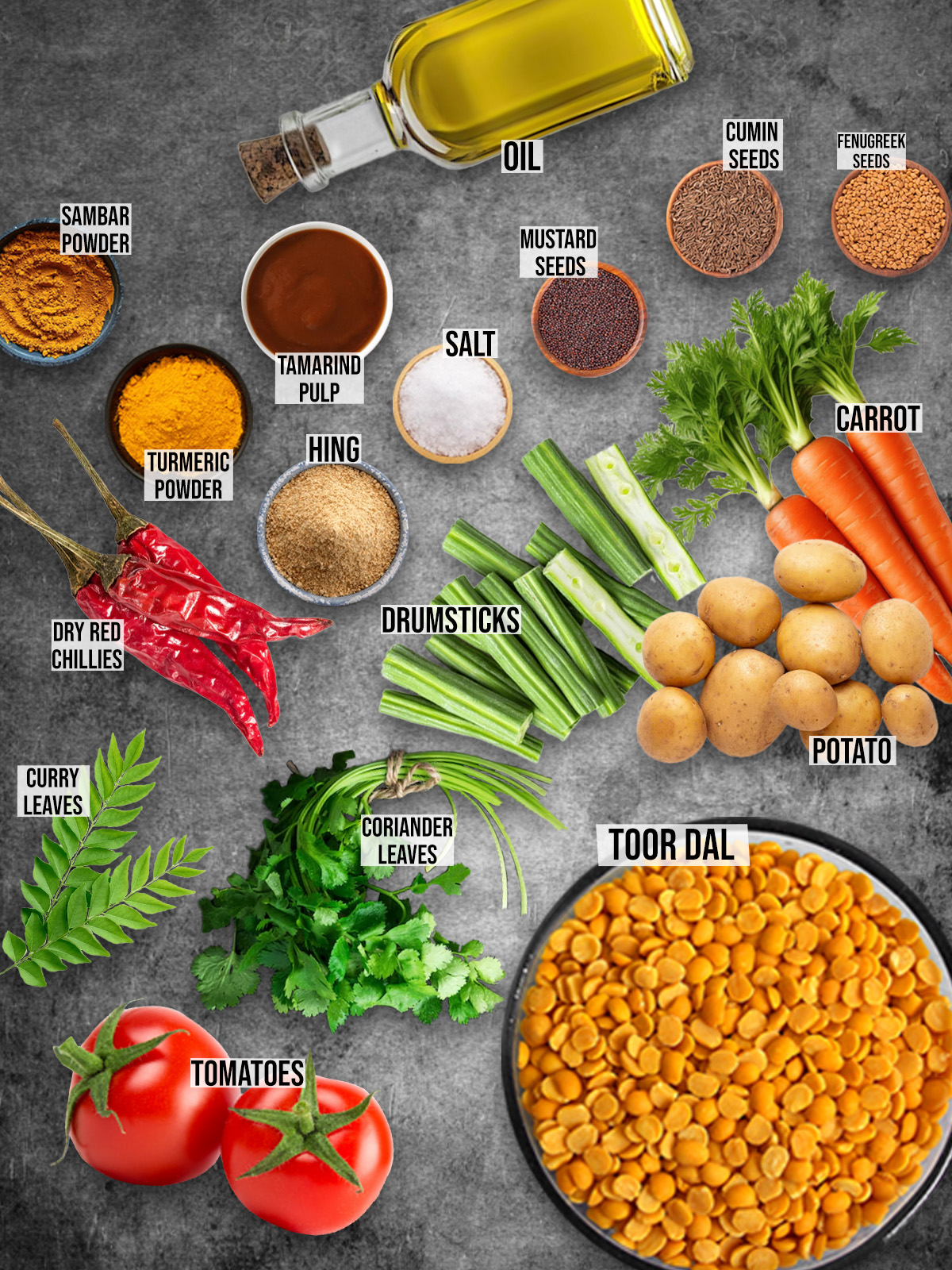
Ingredients Notes:
- Toor Dal (Pigeon Peas): The base of the sambar! When I cook it, I make sure it’s soft and smooth, just like how my mom always said, “Sambar isn’t sambar without perfectly cooked dal.”
- Tamarind: Ah, the secret tang! I clearly remember my aunt teaching me that adding just the right amount of tamarind is what gives the sambar its signature zing. She always said, "Too much, and it’s too sour, but just enough, and it’s perfect!"
- Sambar Powder: The heart of the flavor. I always use fresh homemade powder because it’s way more aromatic than the store-bought version—my dad swears by it!
- Curry Leaves: A magical touch indeed! My grandmother always said, “No curry is complete without curry leaves,” and I couldn't agree more. The moment you add them, they release a fragrant aroma that fills the kitchen, making everything smell absolutely delicious.
- Vegetables: Carrots, potatoes, drumsticks—oh my! Each vegetable brings a unique taste, and I love how every bite tells a new story.
How to Make Sambar from Scratch
Step 1: Cook the Dal
Rinse ½ cup of toor dal under water until it runs clear. Place the dal in a pressure cooker with 2 cups of water and ½ teaspoon of turmeric powder. Cook for 4-5 whistles or until the dal is soft. Mash it to a smooth consistency and set aside.
Step 2: Prepare Tamarind Extract
Soak 2 tablespoons of tamarind in ¼ cup of warm water for 10 minutes. Extract the pulp by squeezing and discard the residue.
Step 3: Cook the Vegetables
Chop 1 cup of mixed vegetables (carrots, potatoes, tomatoes, drumsticks) and cook them with ½ teaspoon of turmeric powder and a pinch of salt. Steam or cook them in water until they’re tender but not mushy.
Step 4: Make the Sambar
Combine the cooked dal, vegetables, and tamarind extract in a pot. Stir in 2 tablespoons of sambar powder and adjust the salt to taste. Simmer for 10 minutes to allow the flavors to meld.
Step 5: Temper the Spices
In a small pan, heat 2 tablespoons of oil. Add 1 teaspoon of mustard seeds, ½ teaspoon of cumin seeds, ¼ teaspoon of fenugreek seeds, a pinch of asafoetida, curry leaves, and 2 dry red chilies. Once the seeds pop and the spices release their fragrance, pour this tempering over the sambar.
Step 6: Garnish and Serve
Sprinkle chopped coriander leaves on top for a burst of freshness. Serve your sambar hot with rice, idli, dosa, or vada for a satisfying meal.

Pairing Sambar Recipe with Other Dishes
- Idli & Dosa: Soft idlis or crispy dosas are a perfect accompaniment to sambar. The idlis soak up the sambar, while the dosas add a crunchy contrast.
- Rice (Sambar Sadam): For a heartier meal, serve sambar with steamed rice and crispy papad or vada.
- Chutneys: Add a side of coconut, tomato, or onion chutney to elevate the flavors even further.
Creative Sambar Recipe Variations
While traditional sambar is already bursting with flavors, there are numerous variations that you can try:
Spicy vs. Mild: Adjust the heat by varying the amount of chilies used. Customize the spice level to suit your taste.
Karnataka Style Sambar: This version incorporates coconut, lending a richer, slightly sweeter taste.
Mango Sambar: A seasonal variation where raw mango is added for a tangy, fruity twist.
Drumstick Sambar: Drumsticks (moringa) are packed with nutrients and add a unique flavor to the sambar.
Sambar with Coconut Milk: For a creamy, comforting version, add coconut milk – perfect for a Kerala-style sambar.
Health Benefits of Sambar
Sambar is not only delicious, but it’s also packed with nutrients:
- Protein & Fiber: Lentils (toor dal) and vegetables provide an excellent source of plant-based protein and dietary fiber.
- Vitamins & Minerals: The mix of vegetables like carrots, tomatoes, and drumsticks provides essential vitamins (A, C) and minerals (iron, calcium).
- Digestive Health: Tamarind, curry leaves, and asafoetida are known for their digestive benefits, promoting a healthy gut.
Storing and Meal Prep Tips
Meal Prep: Cook a large batch and serve it with different grains like quinoa, rice, or millet, or pair it with idli or dosa for variety throughout the week.
Leftover Sambar: Leftover sambar can be repurposed as a soup, or used in sandwiches, wraps, or veggie stews.
Freezing: You can freeze sambar for up to one month. Just reheat and enjoy!
Pro Tips for Perfect Sambar Every Time
- Consistency: Adjust the thickness of the sambar by adding more water if you like it runny, or simmering it longer for a thicker consistency.
- Homemade Sambar Powder: For the best flavor, try making your own sambar powder with spices like coriander, cumin, fenugreek, and dried chilies. The fresh aroma is unbeatable!
- Pressure Cooker Convenience: Using a pressure cooker cuts down on cooking time while retaining all the flavors and nutrients. It’s the perfect tool for busy days!
Did you try this Sambar recipe? Leave a ⭐️⭐️⭐️⭐️⭐️ rating below and share it on Instagram, Facebook, and Pinterest!
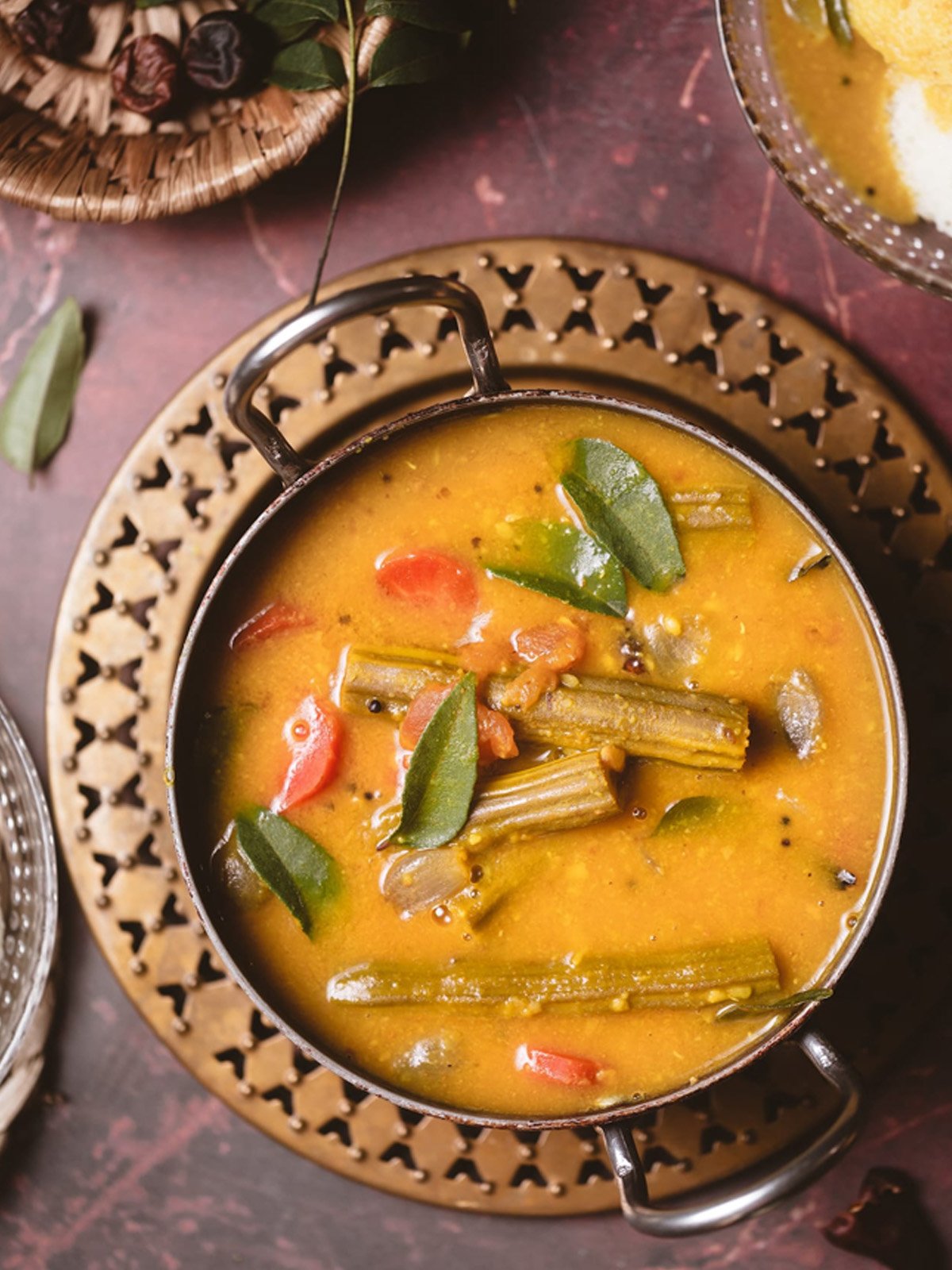
❔FAQs
While sambar powder is essential for traditional flavor, you can make a substitute using a mix of spices like coriander, cumin, turmeric, and chili powder. However, using authentic sambar powder provides the best taste.
Common vegetables include carrots, potatoes, drumsticks, tomatoes, and beans. You can use other vegetables based on your preference or seasonal availability, such as pumpkin, okra, or eggplant.
Yes, you can use store-bought tamarind paste as a convenient alternative to tamarind pulp. Just ensure to adjust the quantity based on the concentration of the paste.
Sambar can be stored in the refrigerator for up to 4-5 days. For longer storage, it can be frozen for 2-3 months. Reheat thoroughly before serving.
To make sambar thicker, reduce the amount of water during cooking or let it simmer longer. For a thinner consistency, add more water and adjust the seasoning as needed.
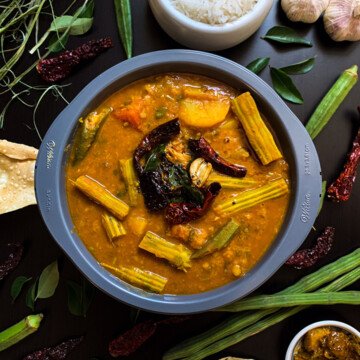
Sambar Recipe
Ingredients
Ingredients
- ½ Cup Toor Dal (Pigeon Peas)
- 1 Cup Vegetables (carrots, potatoes, tomatoes,drumsticks, etc.)
- 2 tablespoon Tamarind Pulp
- 2 tablespoon Sambar Powder
- ½ teaspoon Turmeric Powder
- Salt To taste
- 1 teaspoon Mustard Seeds
- ½ teaspoon Cumin Seeds
- ¼ teaspoon Fenugreek Seeds
- Asafoetida(Hing) A pinch
- Curry Leaves A few
- 2 Dry Red Chilies
- 2 tablespoon Oil
- Water As needed
- Coriander Leaves For garnish
Instructions
Cook the Dal
- Rinse ½ cup of toor dal under water until it runs clear. Place the dal in a pressure cooker with 2 cups of water and ½ teaspoon of turmeric powder. Cook for 4-5 whistles or until the dal is soft. Mash it to a smooth consistency and set aside.
Prepare Tamarind Extract
- Soak 2 tablespoons of tamarind in ¼ cup of warm water for 10 minutes. Extract the pulp by squeezing and discard the residue.
Cook the Vegetables
- Chop 1 cup of mixed vegetables (carrots, potatoes, tomatoes, drumsticks) and cook them with ½ teaspoon of turmeric powder and a pinch of salt. Steam or cook them in water until they’re tender but not mushy.
Make the Sambar
- Combine the cooked dal, vegetables, and tamarind extract in a pot. Stir in 2 tablespoons of sambar powder and adjust the salt to taste. Simmer for 10 minutes to allow the flavors to meld.
Temper the Spices
- In a small pan, heat 2 tablespoons of oil. Add 1 teaspoon of mustard seeds, ½ teaspoon of cumin seeds, ¼ teaspoon of fenugreek seeds, a pinch of asafoetida, curry leaves, and 2 dry red chilies. Once the seeds pop and the spices release their fragrance, pour this tempering over the sambar.
Garnish and Serve
- Sprinkle chopped coriander leaves on top for a burst of freshness. Serve your sambar hot with rice, idli, dosa, or vada for a satisfying meal.













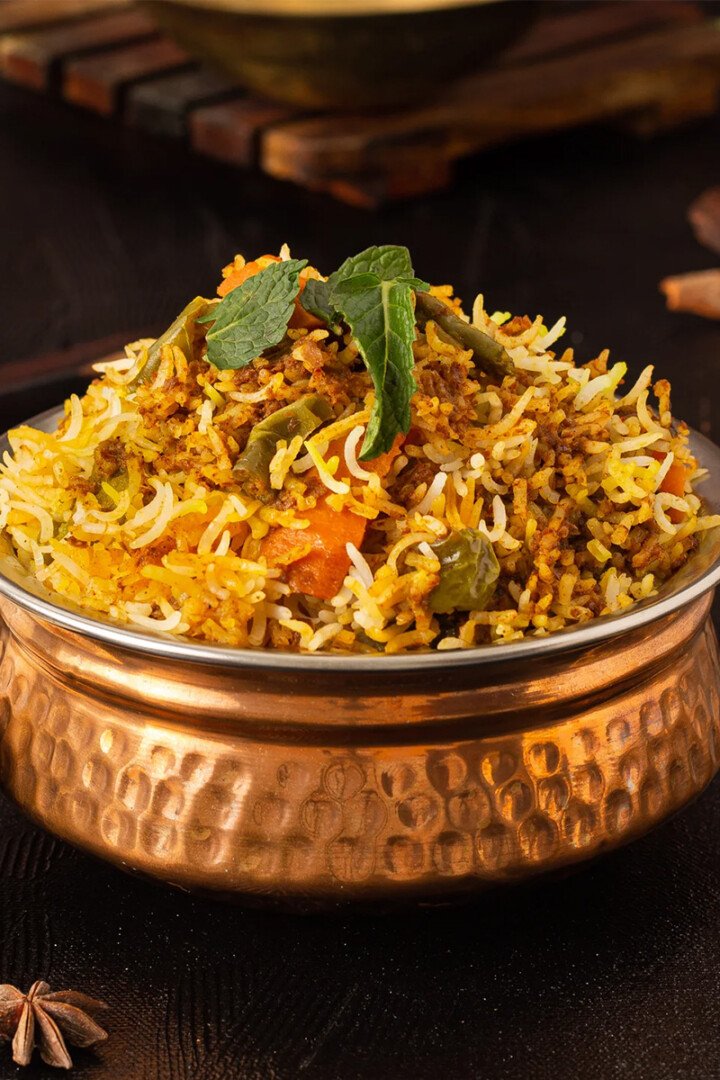
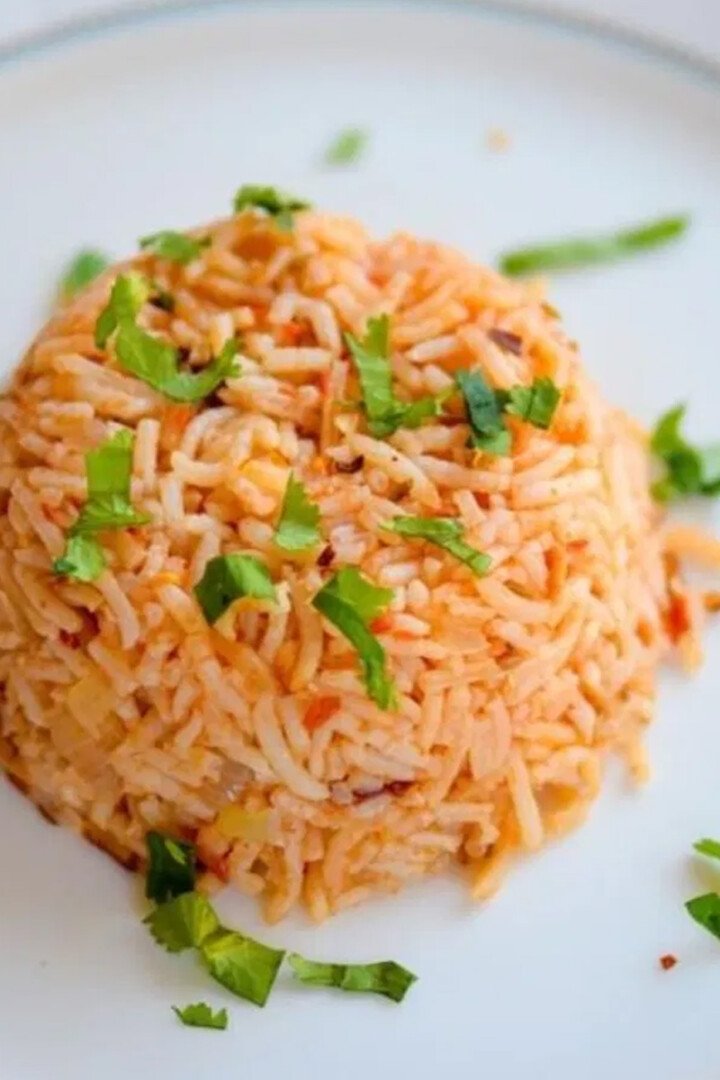


Leave a Reply